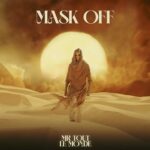Electronic dance music is, quite simply, a generic term covering a wide assortment of electronic musical styles that are popular among clubbers in both North America and Europe. Electronic dance music typically describes any style or music that utilizes the latest forms of electronic media to create its sounds and influence dance clubbers through dance floors. It has become an immensely popular form in North America, where it has frequently replaced the traditional party music as the most popular music choice at many events. Electronic dance music can be defined as any style of electronic music that utilizes computers to manipulate sound and transmit them over dance floor channels.
Electronic dance music is widely played at national level parties and as a general music genre at clubs and raves. Electronic dance music can be described as any style or category that utilizes any one or more of these mediums to transmit its sounds and influence dance clubbers via dance floors. In the past decade there has been a huge evolution in the electronic music industry, which can be broadly described as the birth of new genres such as electro house, trance, nu-disco, and breakbeat.
The birth of these new genres came about when people began to realize that despite the fact that musical equipment was vastly cheaper than ever before electronic equipment still had limitations. By introducing the sequencing software that allowed people to sequence and perform electronic instruments, manufacturers were able to build quality synthesizers that could run off regular stomp machines. The sequencing software was especially useful because it allowed people to build intricate drum beats and lead tracks with little or no MIDI. This gave rise to the first major EDM genres: warehouse rave, acid, and synthetic techno. Today there are dozens of additional sub-genres of electronic dance music.
One of the most popular types of electronic dance music is that which falls between the boundaries of ‘dance music’ and ‘house music.’ Warehouse rave, originally popular in the late ’80s in America and the United Kingdom, featured complex beat juggling, ‘wooshing’ sounds, and polyrhythmic lead tracks. Though most people think of warehouse dance as a trademark of rave it actually evolved out of house music. Originating in the United Kingdom and popularized by artists like John Cusco, this style of electronic music tends to feature complex lead work or ‘breaks’ (percussion-based tracks with percussions and hi-hats).
Another of the top-tier styles of electronic dance music is dubstep. Dubstep is an abbreviation for the British term ‘EDM.’ Electronic dance music is largely produced in the United Kingdom and features an eclectic range of musical influences. Though this form of electronic music may seem to be influenced by trap music and jungle, it is actually a completely different genre. Dubstep features complex drum beats and an almost danceable vibe.
Another of the many different subgenres of electronic dance music is house. Similar to dubstep, house is characterized by heavy vocals and rhythmic beats. The term ‘dry-hop’ refers to a style of music characterized by long, low, distorted tracks; ‘progressed’ is related to this style, but denotes that the tracks have been heavily processed and are considered ‘too digital’ for radio stations.
Other subgenres of electronic dance music include techno, which are similar to Dubstep with a heavier feel, but often includes beats with a harder pace. It’s often combined with other genres to produce a more unique sound. Other popular genres include chillout and folk, with a slower tempo and acoustic guitar. The country has recently experienced a rise in popularity, with a variation on the old country tune ‘Blue Moon of California.’ Other popular variations are alternative or folk, Latin, classic rock, hip-hop, metal, goth and even jazz-based.
What is Electronic Dance Music? These are just some of the many different styles of electronic dance music. With new subgenres constantly appearing, the term EDM may become increasingly vague in the future. This is only a starting point though, as more artists are releasing their own original productions in these subgenres.


